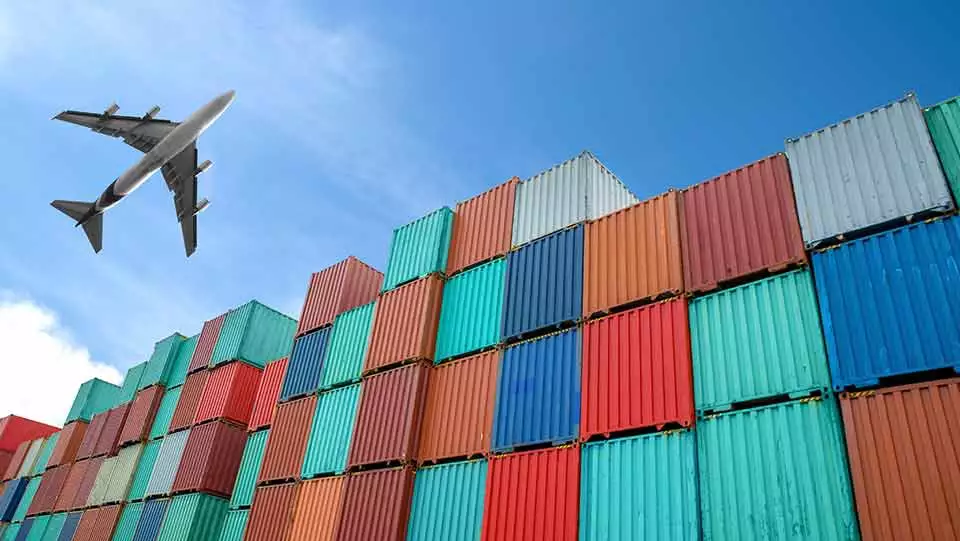How U.S. Manufacturers Can Manage the Risks of North American Nearshoring


U.S. manufacturers have increasingly moved production operations, suppliers and distributors from Asia to American, Canadian and Mexican shores – a strategy known as nearshoring.
According to data from the U.S. Census Bureau, the U.S. imported more goods from Mexico than from China in both 2023 and 2024, and the margin expanded each year.1 Since 2021, imports from both Mexico and Canada have grown, while imports from China have fallen.1 The trend is clear: In the U.S., nearshoring is on the rise, while offshoring continues to decline.
There are compelling reasons why North American nearshoring demands are increasing. The benefits can be convincing, yet nearshoring comes with some unique risks. Before nearshoring becomes part of any business plan, it’s important to understand the risks and implement strategies to address them. This helps ensure that nearshoring operations have the best chance for success.
6 reasons nearshoring is on the rise
From cost savings to improved oversight, several factors are driving the shift toward North American production.
1. Post pandemic demand for alternative labor and shipping sources
Entire nations temporarily halted incoming and outgoing traffic in response to the COVID-19 pandemic. Labor forces across the globe paused work, and strict lockdowns in China restricted much of the globe’s manufacturing workforce.2
“Ships were delayed in ports during COVID,” noted Tony Giannone, Vice President of Multinational at Travelers. “Many manufacturers started to rethink the advantages of offshoring and found that nearshoring could provide similar – if not better – operational and financial benefits.”
2. Logistical supply chain efficiencies
Nearshoring allows materials and goods to move by road instead of ocean. This reduces overall transportation time and, with fewer materials on ships, reduces exposure to port congestion delays.
3. Ease of oversight, safety and quality control
For those responsible for quality control and safety inspections, travel is quicker and therefore more frequent to nearshore manufacturing facilities than it is to overseas operations. Having nearshore operations in similar time zones may also make it easier for manufacturers to conduct business activities.
“It’s easier to engage in quality and safety control in the manufacturing process when all you have to do is hop in your car and drive over the border, versus going somewhere overseas,” explained Marina Linkova-Lichtmaher, Global Underwriting Officer at Travelers.
This means they can monitor quality control and safety more regularly than when offshoring to distant locations. Closer proximity also makes communication easier thanks to the similar time zones.
4. Cost savings
Nearshoring simplifies and shortens travel and shipping, which reduces expenses. Another major expense, however, is labor. While nearshore labor may come at a higher cost than offshore workforces, it is less costly than manufacturing in the U.S. According to Linkova-Lichtmaher, “This is partly due to lower relative wages and partly due to incentive programs by the Canadian and Mexican governments that are designed to promote nearshoring to their countries.”
5. Fewer language barriers
According to the U.S. Census Bureau, Spanish is the most frequently spoken language other than English (LOTE) in U.S. homes, making up 61.6% of the LOTE population. Chinese is the second most spoken language at home, but with only 5.2% of the LOTE population speaking the language, it may be easier for manufacturers to source Hispanophone talent due to its much larger pool of speakers.3 As a result, in place of Asia, many American manufacturers may see nearshoring in Canada and Mexico as a way to strengthen supplier relationships and streamline operations.
6. IP protection
Protecting intellectual property (IP) is a notable challenge when offshoring to China.4 This makes nearshoring to North America more attractive, as trade agreements between the U.S., Canada and Mexico may offer more assured IP protections.5
6 nearshoring risks to manufacturers
Despite the benefits, nearshoring comes with its own set of unique challenges. Manufacturers must address risks related to infrastructure, security, compliance and supply chain dependencies to ensure a smooth transition to sustainable operations nearshore.
1. Infrastructure limitations
When nearshoring, companies must perform their due diligence. This should include, yet not be limited to, things like vetting the quality of the vendors’ property and disaster preparedness, as well as planning for any issues that are discovered. For instance, many areas of Mexico struggle with water scarcity,6 which may mean that buildings may not have proper fire safety features or water-reliant systems that don’t function properly. For example, water sprinkler systems may not operate correctly if the water pressure is too low.7
2. Weather trends and natural catastrophes
Just as with offshoring, nearshoring partners may experience extreme weather and other natural catastrophes unique to their region. For example, certain areas of Canada are prone to floods and wildfires,8 while portions of Mexico may be vulnerable to earthquakes, volcanic activity and hurricanes, particularly along the Gulf and Pacific coastlines.9 Manufacturers should analyze historical weather data to assess and account for potential risks.
3. Economic and business interdependencies
Nearshoring creates interdependency risks, where disruptions in Mexico or Canada can impact U.S. operations because the parent operation depends on goods manufactured by its nearshore operations.
“The U.S. parent company is dependent on the goods at their foreign subsidiary’s location,” said Darren Caspers, AVP of Global Field and Distribution at Travelers. “For example, if the foreign subsidiary’s manufacturing plant has a building that burns down, the U.S. parent company will be interrupted even though the loss was experienced in another country. They could experience loss profit and increased costs as a result of the damage to the property, and this exposure can easily be overlooked in a global insurance program.”
Additionally, economic interdependencies may mean global manufacturers that engage in nearshoring are vulnerable to political policies, such as tariffs on imports from Mexico and Canada. These tariffs could eat into cost savings resulting from moving manufacturing from China to North America and add a layer of complexity to building a stable and predictable supply chain within the region. However, potential tariffs on imports from China may still make nearshoring a viable solution for cost-conscious U.S. manufacturers. This overall uncertainty could potentially slow down or accelerate nearshoring growth in the near future.
4. Regulatory and compliance challenges
Each country has distinct regulatory requirements. For instance, Mexico City only recently started requiring automatic sprinklers based on the occupancy and risk of the buildings.10
“Canada conducts background checks on all drivers and is unlikely to admit anyone with criminal histories or recent DUIs,”11 explained Scott Cornell, Inland Transportation Practice Leader at Travelers.
Cornell added that compliance issues may impact supply chain efficiency for nearshoring manufacturers. “In the United States, truck drivers are restricted in their pickup activities after they drop off a load from either Mexico or Canada,” he said. “They can only backhaul to their home countries and cannot be used to run lanes while in the U.S.”
5. Transportation security issues
Cargo theft is another nearshoring transport risk. “In Mexico and Canada, factions of drug cartels and motorcycle gangs are actively stealing full truckloads,”12 said Cornell, “and because these types of thefts often result in violence, witnesses may be discouraged or unwilling to provide information to authorities.”
6. Remaining supply chain complexity
Whether offshoring or nearshoring, organizations must deal with the logistical and legal complexities involved in an international supply chain. For instance, the laws for obtaining commercial vehicle insurance in Mexico and Canada differ from the way companies insure vehicles in the United States.
Also, nearshoring manufacturers may be required to use local brokers and risk control claim services in each country. Linkova-Lichtmaher pointed out that it’s important to work with a global insurer like Travelers. Travelers has deep experience helping manufacturers navigate the complexities of international exposures and offers global coverage designed to protect its businesses in the countries where they operate.
7 tactics to help reduce nearshoring risks
Leaders who understand the full scope of nearshoring challenges can take specific actions to help reduce their exposure to the most common risks.
- Monitor political climates, potential security threats, labor conditions and economic policies that may impact nearshoring operations and adjust accordingly.
- Assess both typical and emerging environmental risks at supplier locations and develop business continuity plans that include alternative suppliers in other locations.
- Ensure that suppliers comply with local regulations regarding worker safety and environmental protections.
- Conduct frequent quality control checks at nearshore facilities to ensure they meet production standards and deliver on customer expectations.
- Hire personnel and purchase supplies and equipment to address location-specific risks (e.g., security for cross-border transport and water carriers where sprinkler systems are not installed).
- Understand and work within the regulatory and compliance conditions that come with nearshoring in each country. For example, Cornell pointed out that U.S. parent companies could build an in-house team to help commercial drivers get CTPAT-certified, which can reduce their waiting times at each border.
- Build a robust suite of commercial insurance coverage designed for global manufacturers, such as general liability insurance, property insurance and inland marine insurance.
Entrust a deeply experienced global insurer
Smart manufacturers rely on experienced global insurance professionals to advise them on the best nearshoring risk management strategies to help protect their business operations. Travelers leverages its partnership network throughout North America and globally to help organizations design coverage solutions to address their operations’ unique needs, risks and local and regulatory requirements – and meet U.S. standards.
Contact your Travelers representative to learn more about global coverage to help reduce your operations’ exposures to nearshoring risks.
Sources
1 https://www.census.gov/foreign-trade/Press-Release/current_press_release/ft900.pdf
2 https://pmc.ncbi.nlm.nih.gov/articles/PMC9273291/
3 https://www.census.gov/library/stories/2022/12/languages-we-speak-in-united-states.html
4 https://www.trade.gov/country-commercial-guides/china-protecting-intellectual-property
5 https://ustr.gov/trade-agreements/free-trade-agreements/united-states-mexico-canada-agreement/fact-sheets/modernizing
6 https://www.climate.gov/news-features/event-tracker/multi-year-drought-and-heat-waves-across-mexico-2024
7 https://abcnews.go.com/International/mexico-city-residents-faced-water-crisis-resort-drastic/story?id=111472771 or https://smartwatermagazine.com/news/smart-water-magazine/water-crisis-mexico-challenges-and-solutions
8 https://www.canada.ca/en/services/policing/emergencies/hazards.html
9 https://climateknowledgeportal.worldbank.org/country/mexico/vulnerability
10 https://www.fmapprovals.com/Resources/Insights/NTC-Mexico-City
11 https://www.cbsa-asfc.gc.ca/travel-voyage/inadmissibility-interdiction-eng.html
12 https://www.freightwaves.com/news/borderlands-mexico-organized-crime-groups-fuel-rise-of-us-cargo-thefts



